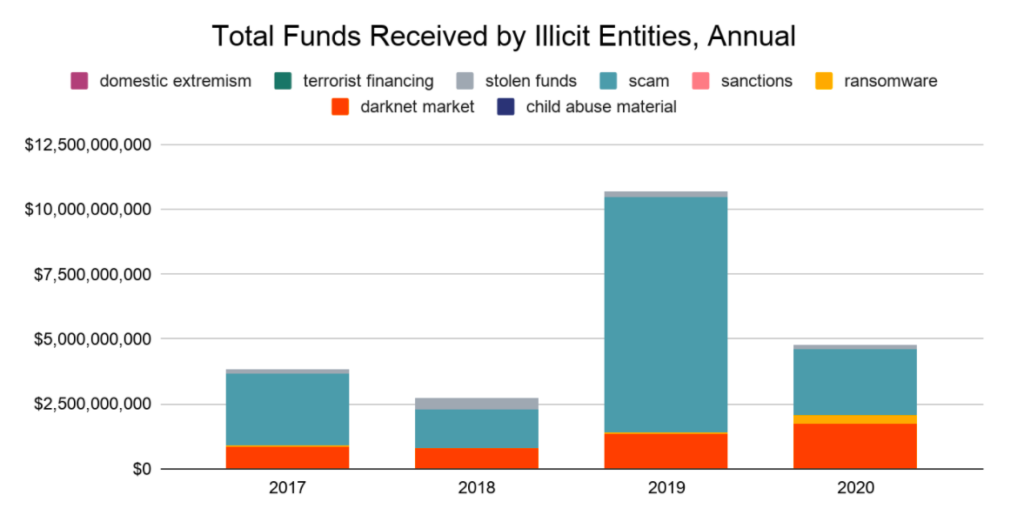Europe now world’s number one crypto economy, overtaking East Asia

Europe has bested East Asia to become the world’s largest crypto economy, as it now generates 25% of all on-chain transaction volume.
That’s according to blockchain analytics unit Chainalysis, which estimates Europe’s Central, Northern, and Western regions received a remarkable $1 trillion in cryptocurrency value in the last year.
Eastern Europe was especially active in the second half of 2020, with a notable spike in activity starting in July.
The region also sent at least 25% of the cryptocurrency value received by the rest of the world. North America was its primary recipient, welcoming 34% of all cryptocurrencies sent from Eastern Europe.
Europe also outranks North America and China. Those two regions generated less than 18% of the world’s on-chain volume apiece.
Europe’s crypto boost came from whales
Large transactions were the top contributor to strengthening any crypto economy. Those valued at $10 million and above were the majority of Europe’s activity during the past year.
Europe’s monthly crypto growth was remarkable: from $1.4 billion in July 2020 to $46.3 billion in June 2021, an increase of over 3,200%.
The majority of these transactions went to decentralized finance (DeFi) platforms.

According to an August Chainalysis report, North America and Western Europe accounted for the majority of interest in DeFi, as indicated by the amount of web traffic to the official websites of major DeFi applications.
This especially began to rise during June 2020, a time now colloquially referred to as “DeFi Summer.”
During 2020’s fourth quarter, Europe’s crypto transfers into DeFi applications began to swiftly overtake other forms of transactions.
By the second quarter of 2021, transfers of more than $10 million accounted for 60% of all DeFi-related transactions globally.
DeFi keeps crypto markets leveraged
Reports indicate that illicit activity in crypto never exceeds 1% of global, on-chain transactions. Most of that illegal activity in crypto involves outright scams.
Proponents of DeFi claim it supports legitimate financial activity and rewards depositors with above-market yield as compensation for providing liquidity to leveraged crypto markets.
They lament the punishingly low yields offered by mainstream financial institutions — often negative after accounting for inflation — and point to DeFi as a promising alternative.

[Read more: Italian feds say Mafia pays cartels for cocaine with Bitcoin and Monero]
DeFi could assist people who rely on remittances by providing peer-to-peer payment services with a simple wallet app.
It can reduce fees, speed up transactions, and eliminate the need for third parties.
DeFi is not exactly secure
In reality, DeFi code is rarely audited and is exceedingly complex. Multi-million dollar hacks and other financial crimes occur in DeFi practically every week.
This week, Compound (COMP) lost $15 million — a relatively unremarkable theft considering the inundating torrent of DeFi hacks.
DeFi proponents also neglect to acknowledge that the vast majority of crypto transactions occur off-chain and are therefore impossible to analyze. This renders the famous “sub 1%” statistic less relevant.
Read more: [SEC pays blockchain startup $625K to help it investigate DeFi ecosystem]
Chainalysis is able to access just $4 trillion worth of annual on-chain transactions. Binance, like nearly every other centralized crypto exchange, does not publish trustworthy information about transactions.
For context, Binance reports yearly transactions exceeding $23 trillion if annualizing current volumes over an entire year — and that’s just one among hundreds of exchanges.
Follow us on Twitter for more informed crypto news.
